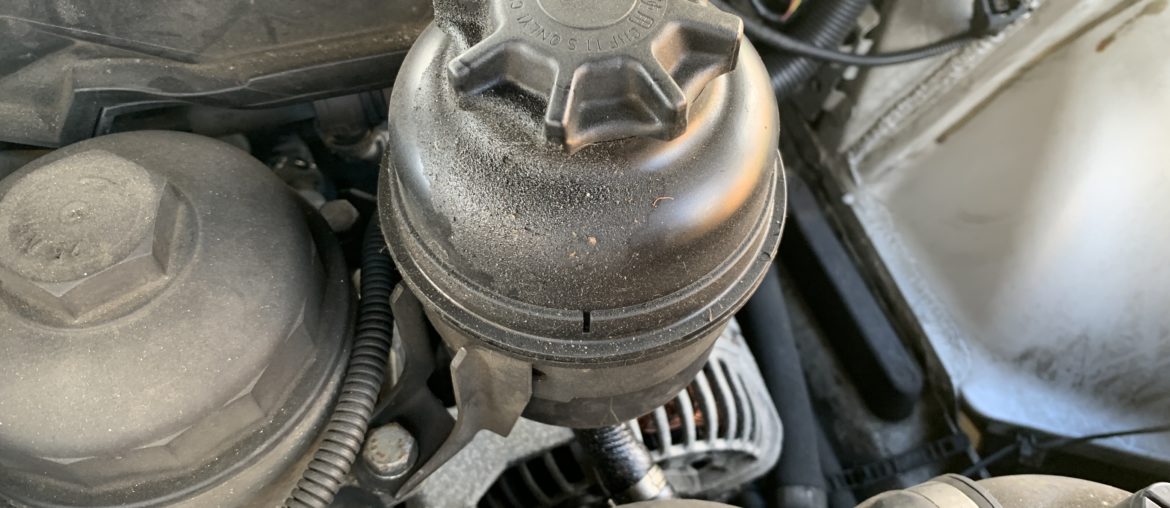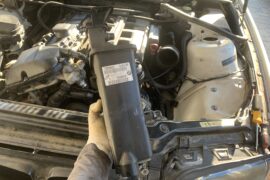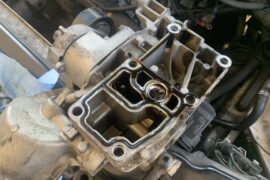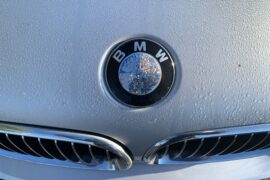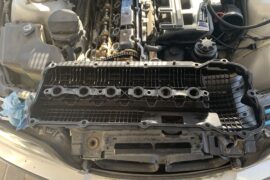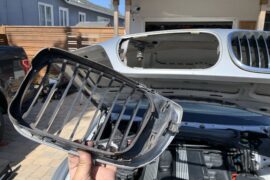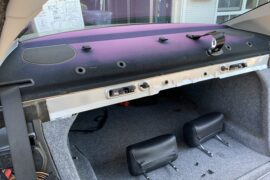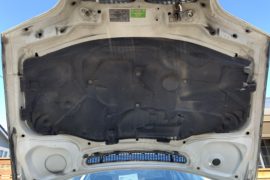The BMW E46 (3-series models) are well known to leak fluids due to parts that tend to fail over time. When we talk about power steering fluid, it can commonly leak where the power steering fluid reservoir resides. In the engine bay, you may notice power steering fluid leaking at the reservoir or at the hoses connected to it. I’ve personally experienced this myself, as have many other E46 owners. On this post, I wanted to run through the process of identifying and replacing some common sources of power steering fluid leaks.
This guide should apply to most E46 vehicles: the 323i, 325i, 328i, and 330i models as well as convertible, sedan, and coupe variants. All of these models utilize the same power steering setup and should use the same parts as outlined in this post. As always, you should still check on any site you purchase parts from to ensure that they fit your specific vehicle before buying.
Tools & Parts Needed
These are some common areas that leak power steering fluid. Depending on your situation, you may have to replace one or more of these. Inspect the location of your leak and determine, which parts you’ll need. To identify the location of the leak, try cleaning off the power steering fluid and observing over time where it leaks from.
For E46 power steering parts, you’ll find some very common brand names such as Rein, URO Parts, and of course Genuine BMW parts. The Genuine BMW parts are typically 2-3 times the cost of the aftermarket Rein and URO Parts, but guarantee quality and fitment. However, in my experience, the URO Parts and Rein parts are OE quality and they have worked well for me on my own 330xi.
Power Steering Reservoir Cap Seal
The BMW part number for the Power Steering Reservoir Cap Seal is 32411128333.
URO Parts 32411128333 P/S Reservoir Cap Seal

Power Steering Reservoir Return Hose
The BMW part number for the Power Steering Return Hose 32416796680. This is the hose that connects between the cooling coil and the power steering reservoir.
Rein Power Steering Return Hose: Amazon
Genuine BMW Power Steering Return Hose: Ebay
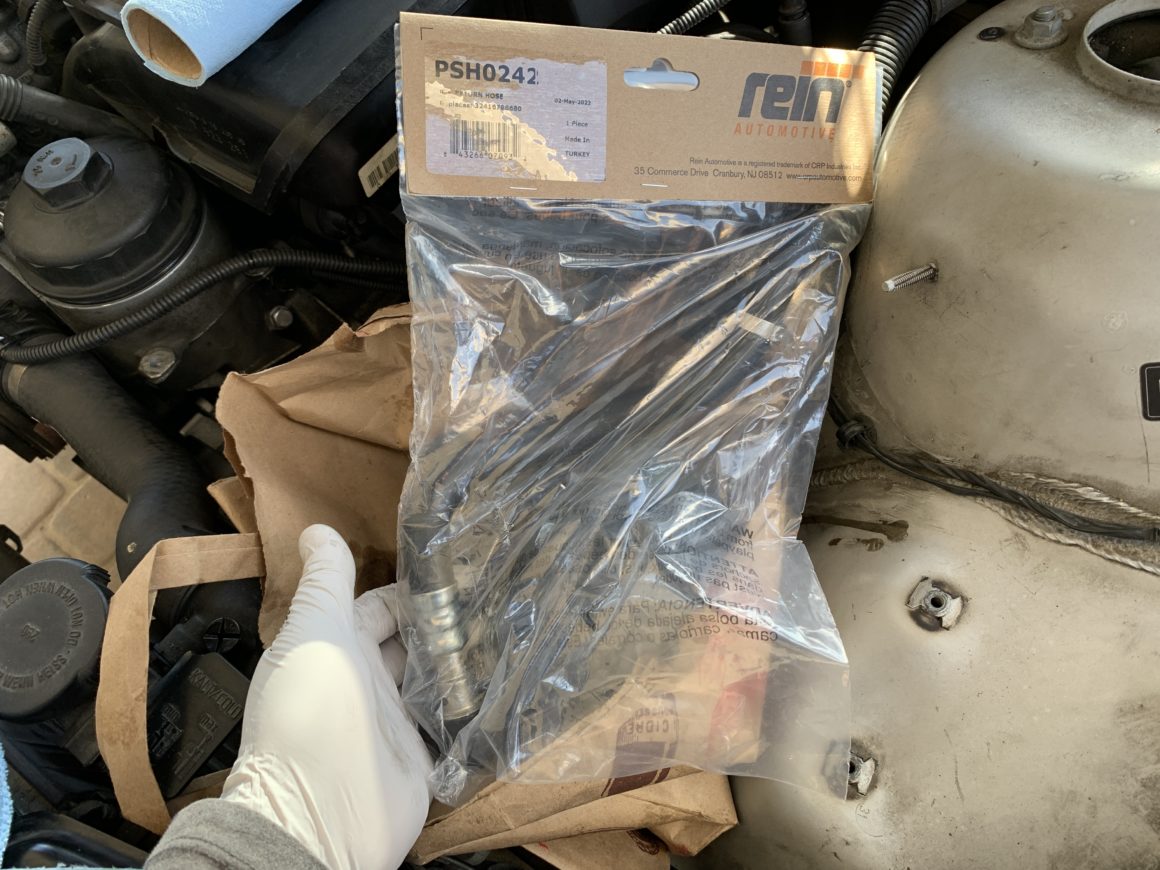
Power Steering Reservoir Suction Hose
The BMW part number for the Power Steering Return Hose 32416750155. This hose connects between the power steering reservoir and the power steering pump.
URO Parts Power Steering Suction Hose: Amazon
Genuine BMW Power Steering Suction Hose: Amazon / Ebay
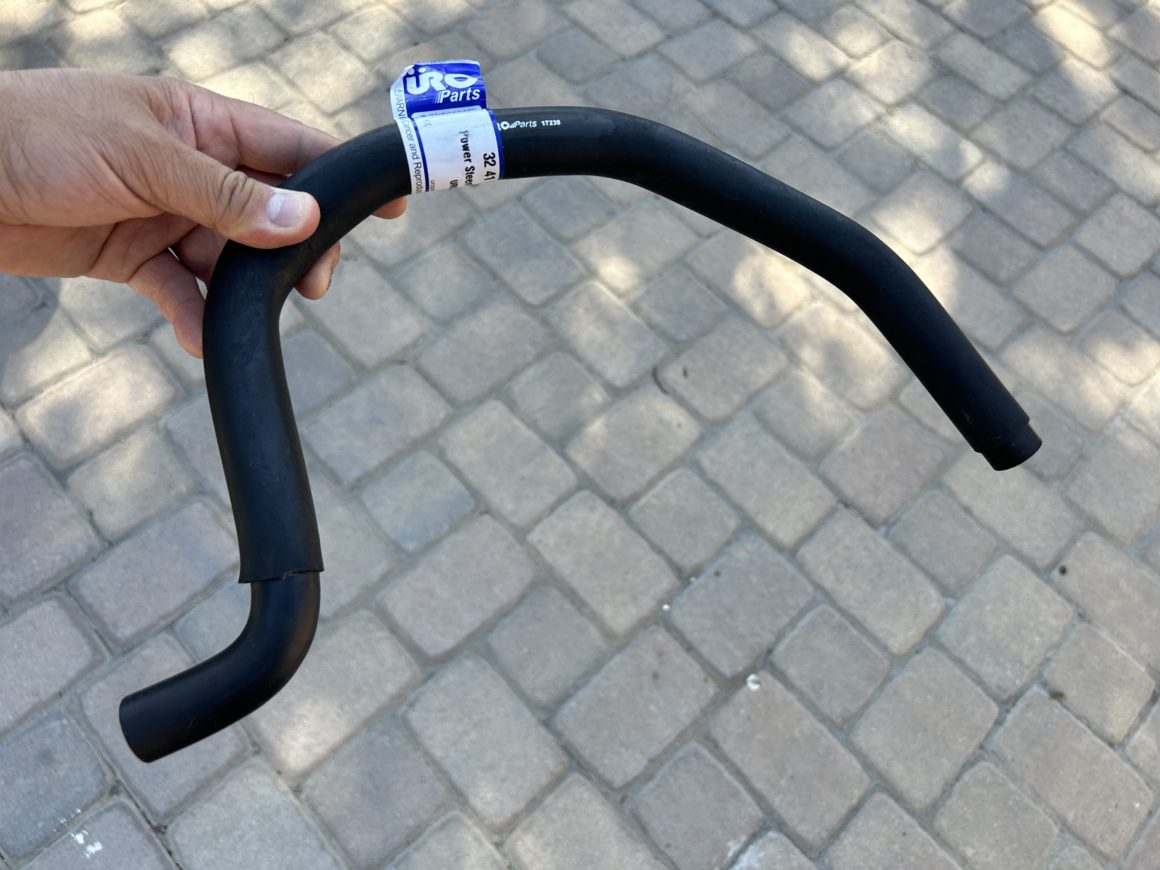
Power Steering Reservoir
The BMW part number for the Power Steering Reservoir itself is: 32416851217. Typically when you purchase the reservoir, it comes with the cap and seal as well.
URO Parts Power Steering Reservoir: Amazon
Rein Power Steering Reservoir: Amazon
Genuine BMW Power Steering Reservoir: Ebay
Power Steering Fluid
The E46 will come with one of two types of power steering fluid. It will either be CHF11S fluid or ATF (Dexron III) fluid. One way to tell what fluid your car uses is to look at the power steering reservoir cap. Either a label ring on the cap or imprinted on the cap, is a note indicating what type of power steering fluid your car uses.
ATF fluid and CHF11S fluid is not compatible with one another, therefore you must use the same fluid your car is already using. It’s possible that your power steering reservoir may have been replaced at some point in the past and the new label may not truly reflect what fluid is being used in your car.
Another way to tell what power steering fluid you have is to look at previous service records to identify what was used in the past. Finally, you can identify the fluid by color: ATF fluid is red, while CHF11S is green. However when the fluid is aged, it will be darker in color and as a result, may be difficult to distinguish the colors.
If you’re using ATF fluid, the recommendation is to use a Dexron III fluid. Some Dexron IV fluids are compatible for use with Dexron III, such as the ones listed below.
ATF Dexron III: ACDelco Gold Type III ATF (1qt)
ATF Dexron IV: Red Line D4 Synthetic ATF (1qt)
Finally, if your car uses CHF11S, then it’s easy for you. The main one that most folks use, is made by Pentosin.
CHF11S: Pentosin CHF11S Long-Life Synthetic Hydraulic Fluid
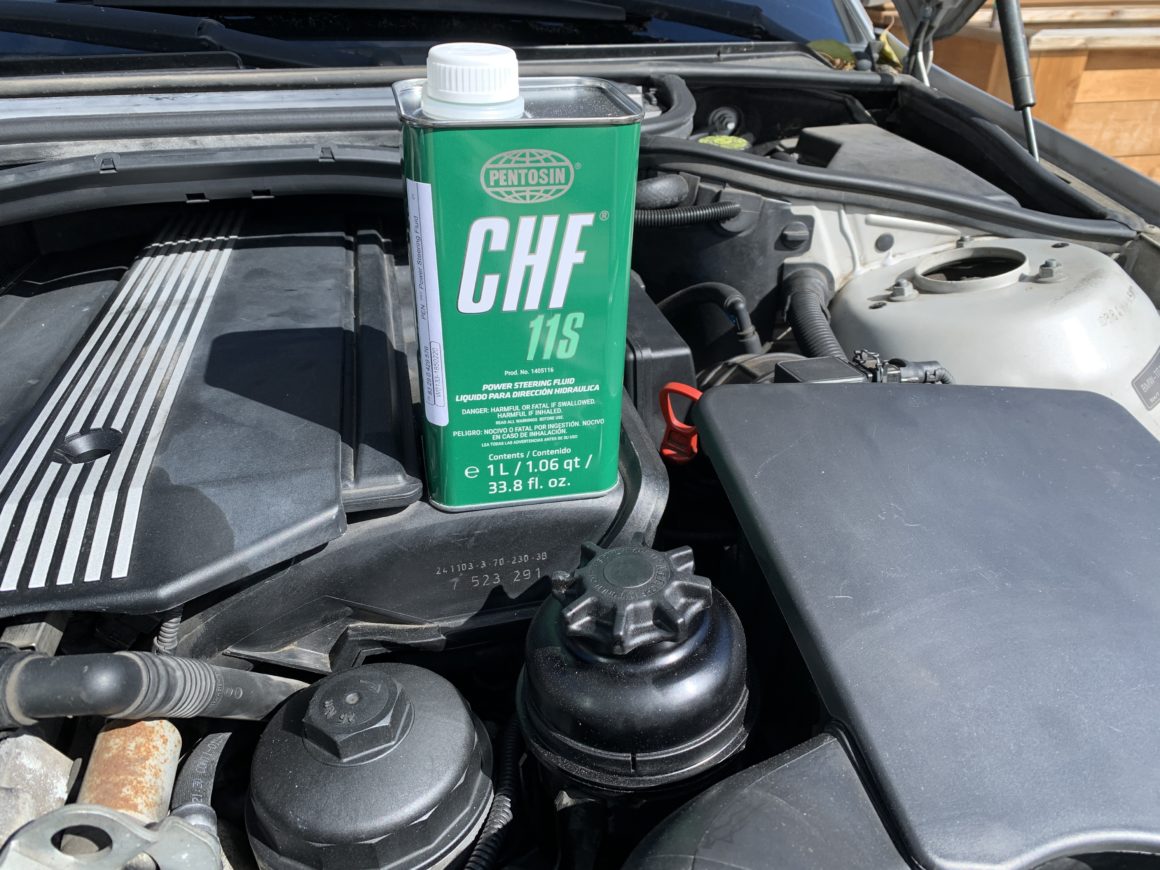
Drain Pan
Custom Accessories Drain Pan , Black
Nitrile Gloves
MedPride Nitrile Exam Gloves, Powder-Free Box/100 – Small | Medium | Large
Shop Towels
Scott Shop Towels Original, Blue, 12 Rolls/Case, 660 Towels/Case
How to Repair Common Power Steering Fluid Leaks on the BMW E46
Most of the common power steering fluid leaks happen within in the engine bay. This makes it easier to access and to identify where the leak is coming from. Ideally, you want to visually inspect and identify the location where the leak might be happening. Sometimes it may be difficult because the leak comes from a higher location, yet appears to be leaking down at a lower spot.
If your vehicle is pretty old and you don’t want to worry about issues later down the line, you should consider replacing all of these parts as preventative maintenance. It’s very common for all of these parts to fail at some point, so may opt for changing everything out at once and not have to worry about it failing later down the line. By replacing everything all at once, you can avoid having to drain the power steering fluid every time another part fails.
Power Steering Reservoir Cap Seal Leak
If you have a leak on the power steering reservoir and it’s above the level where the supply/return hoses enter the reservoir, you may need to replace the reservoir cap seal.
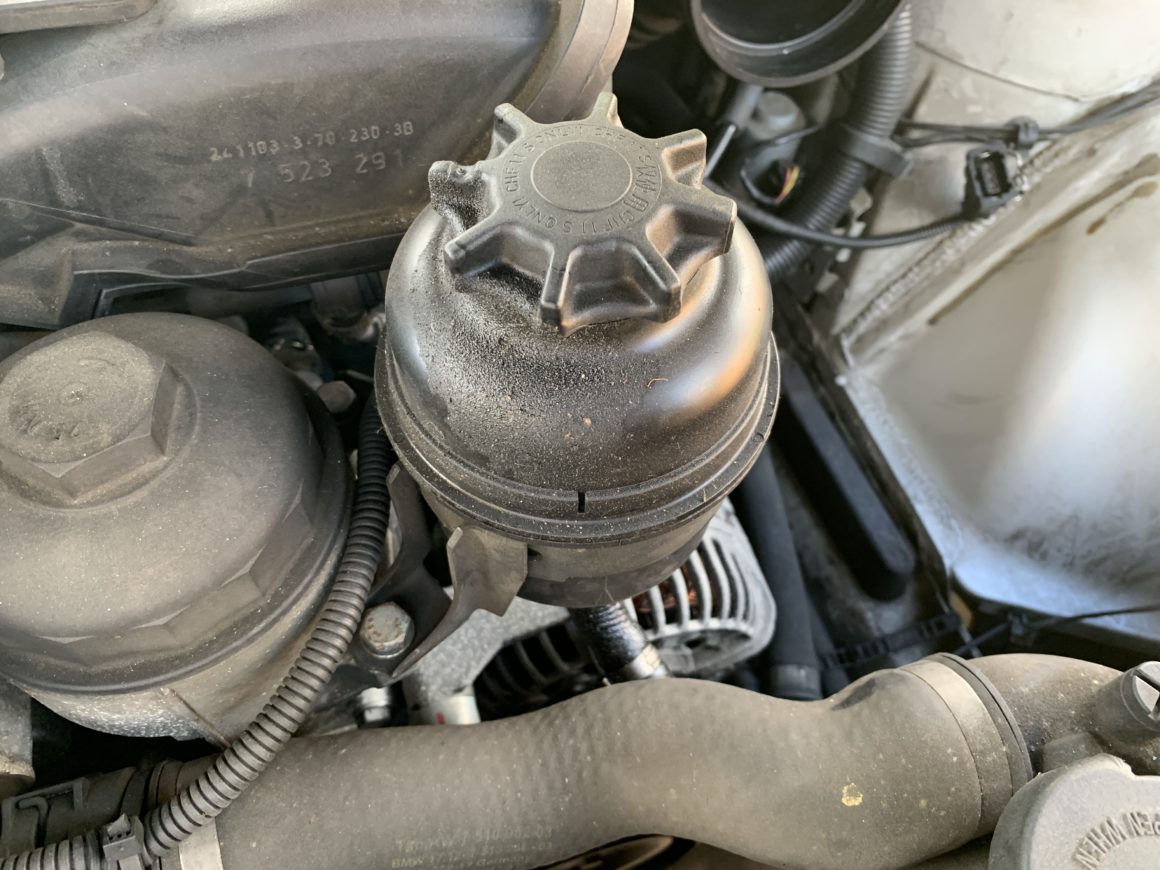
This reservoir cap seal is basically an O-ring that is on the cap and it’s very easy to replace. Simply remove the power steering reservoir cap and use a flat head screwdriver to remove the cap seal. Then prime your new cap seal with power steering fluid and install it onto the cap.
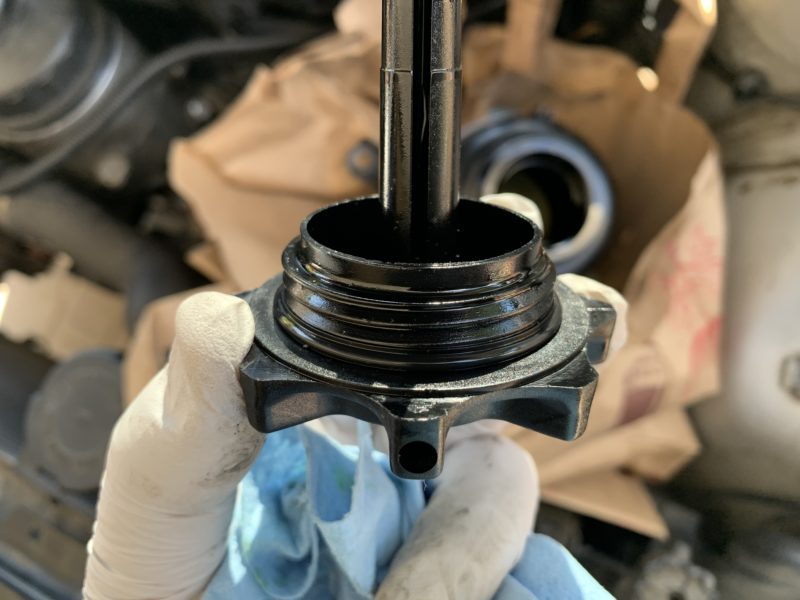
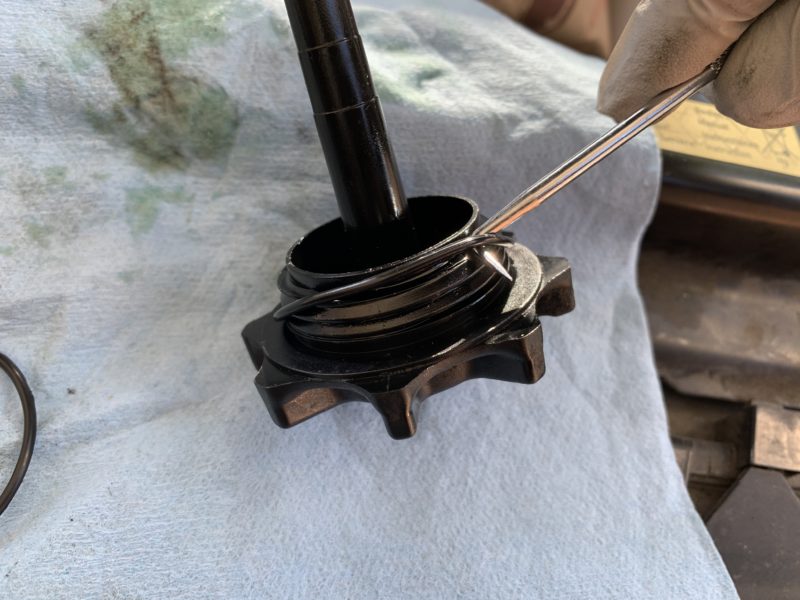
Power Steering Reservoir/Return Hose/Suction Hose Leaks
There are two hoses that connect to bottom of the power steering reservoir– one is the supply line (reservoir to cooling coil shown in left photo) and the other is the return line (reservoir to power steering pump shown in right photo.) Either of these hoses can leak due to cracks or deterioration over time. The fix is to simply replace the hose, however the process for replacing them can take a bit of effort.
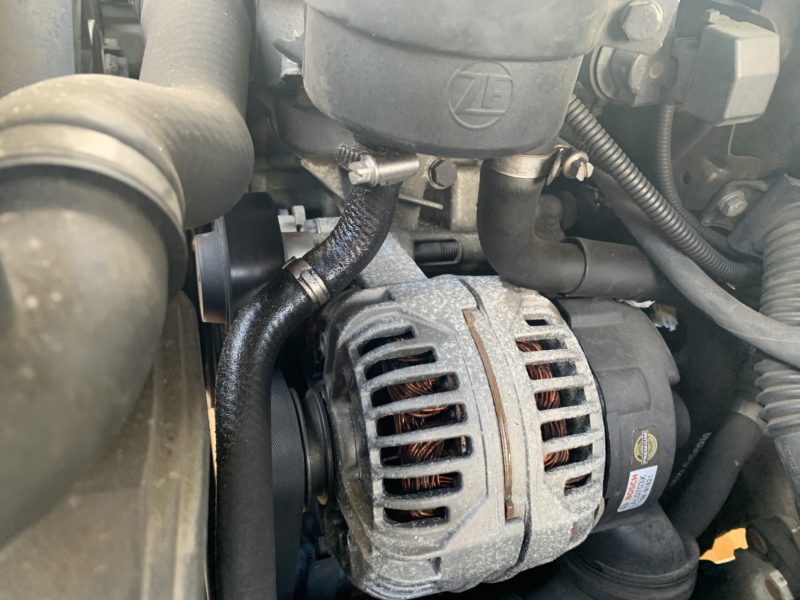
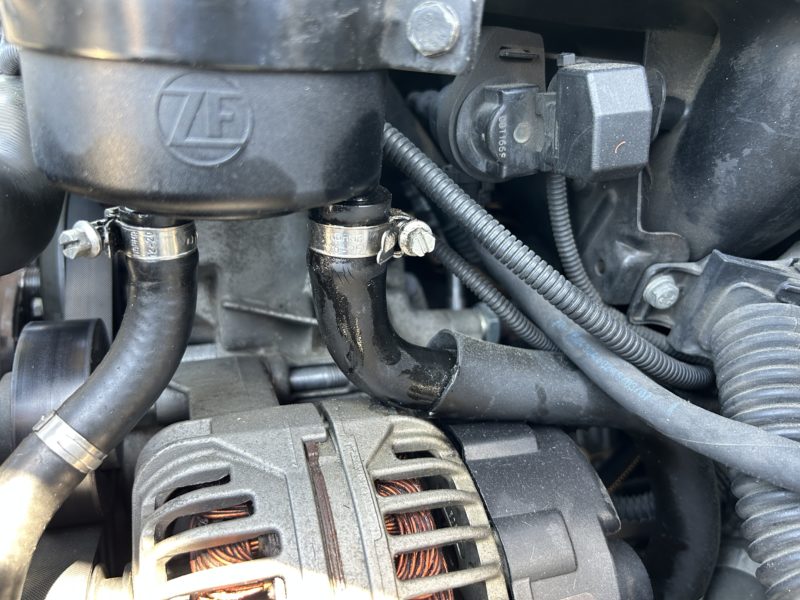
To get access to these hoses, you’ll need to remove the front air duct and engine air filter housing so that you’ll have access to the power steering fluid reservoir and hoses. Remove the air filter housing via the (2 qty) bolts that attach the housing to the frame.
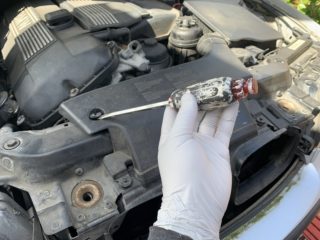
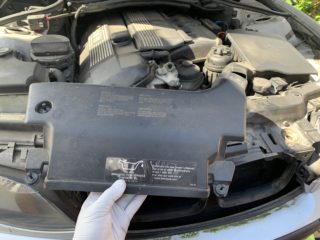
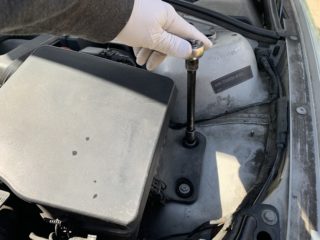
To replace either supply and/or return hoses (or to replace the reservoir itself), first suction out the power steering fluid out of the reservoir. You can use a suction fluid extractor, or I personally like the ease of using a turkey baster. With most of the fluid taken out of the reservoir, we won’t have to worry about as much fluid draining out of the hoses, which can cause a big mess. Even if you drain the reservoir first, you’ll still have some fluid that leaks out when you’re removing the hoses from the reservoir; it will just be much less fluid draining.
With the fluid mostly taken out of the reservoir, you can now remove the power steering hoses from the reservoir. It also helps to remove the (2 qty) bolts that hold the power steering reservoir down to the frame of the car. Try to place some rags/shop towels underneath the reservoir, as well as a drain pan underneath the vehicle to catch any residual power steering fluid.
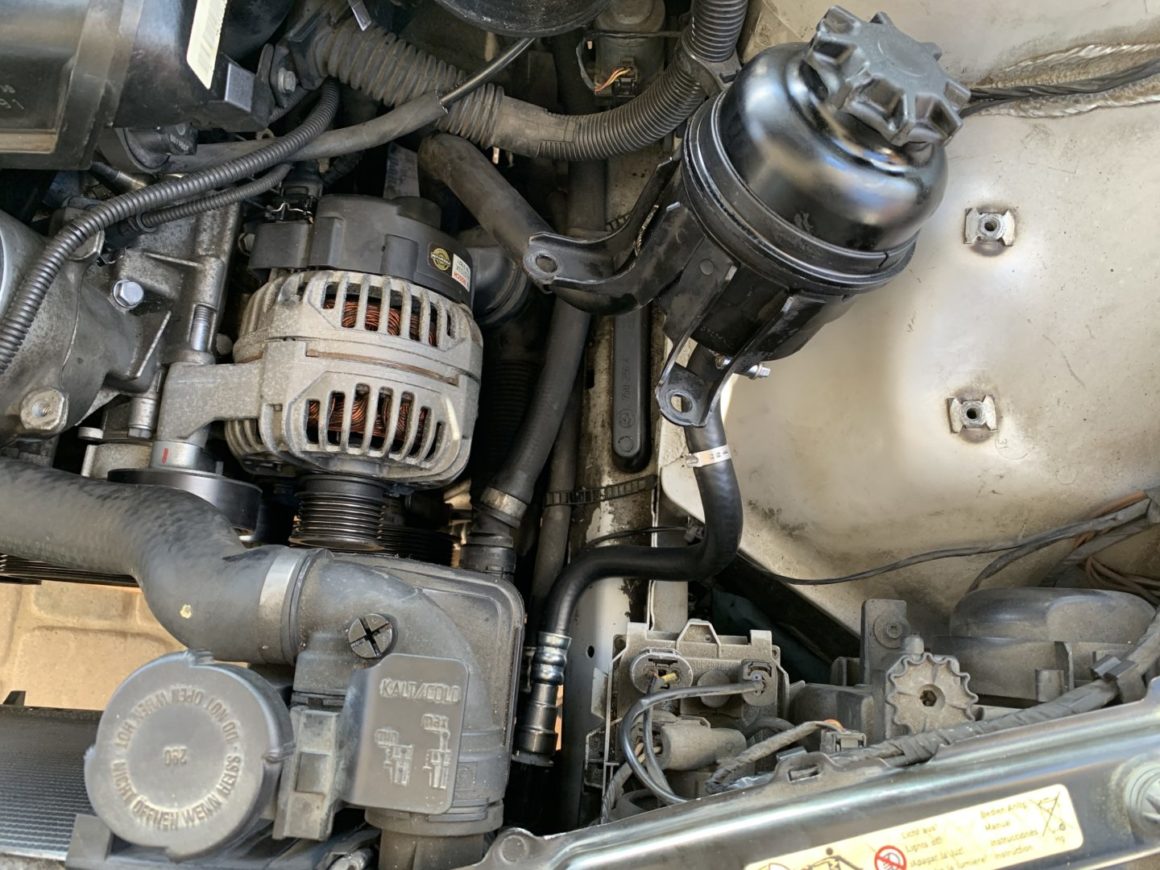
If you’re only replacing the Power Steering Reservoir, you can separate the reservoir from the mounting ring with the 10mm clamping bolt. You can then undo the two clamps holding the two hoses to the reservoir, remove the hoses, and replace the reservoir. Keep some shop towels directly underneath to catch residual reservoir fluid that will leak out.
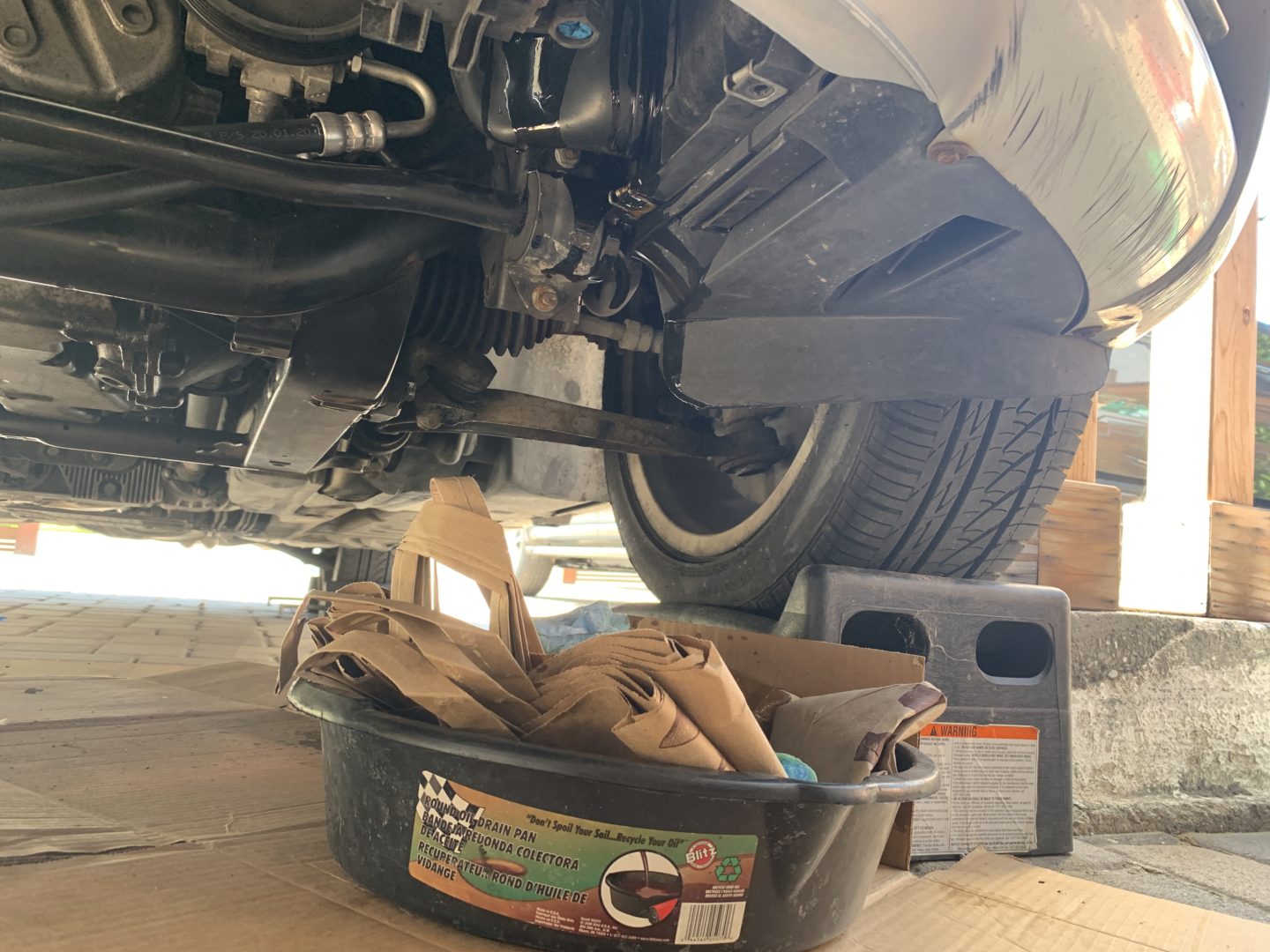
For the Power Steering Return Hose (reservoir to cooling coil), you need to remove the other end off of the cooling coil. This takes some effort to remove as you’re a bit limited on space.

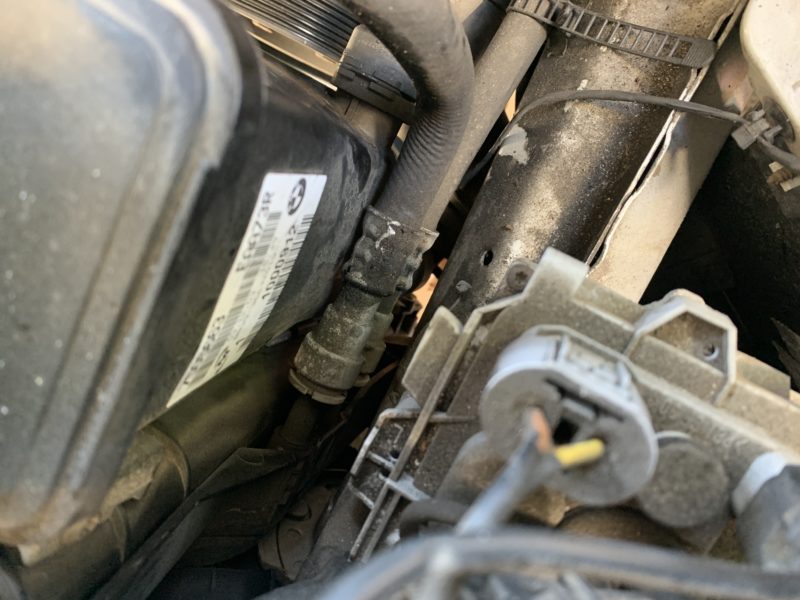
The hose removal pliers shown below is probably the ideal tool to use to separate the hose from cooling coil. Squeezing the handles together pries the tips apart. However, I wasn’t able to get the hose to separate from the cooling coil with this specific set of hose removal pliers; perhaps a larger hose removal tool might work.
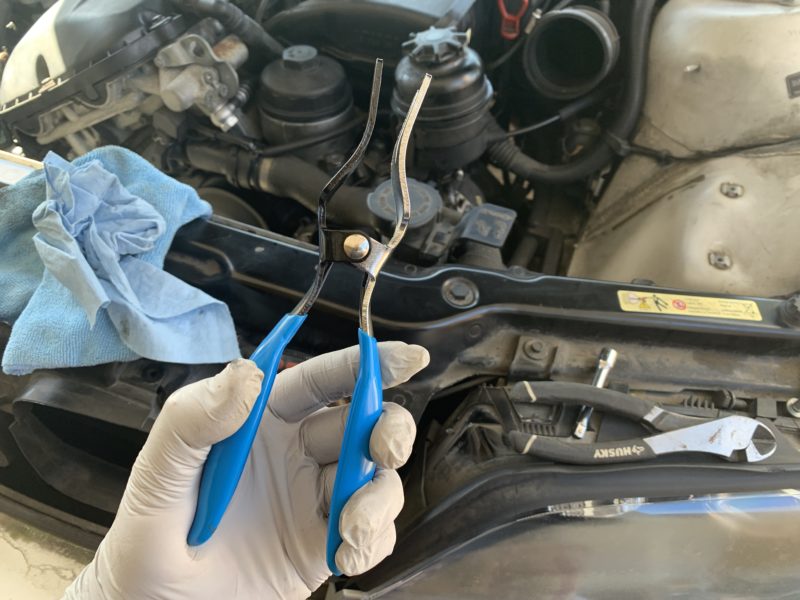
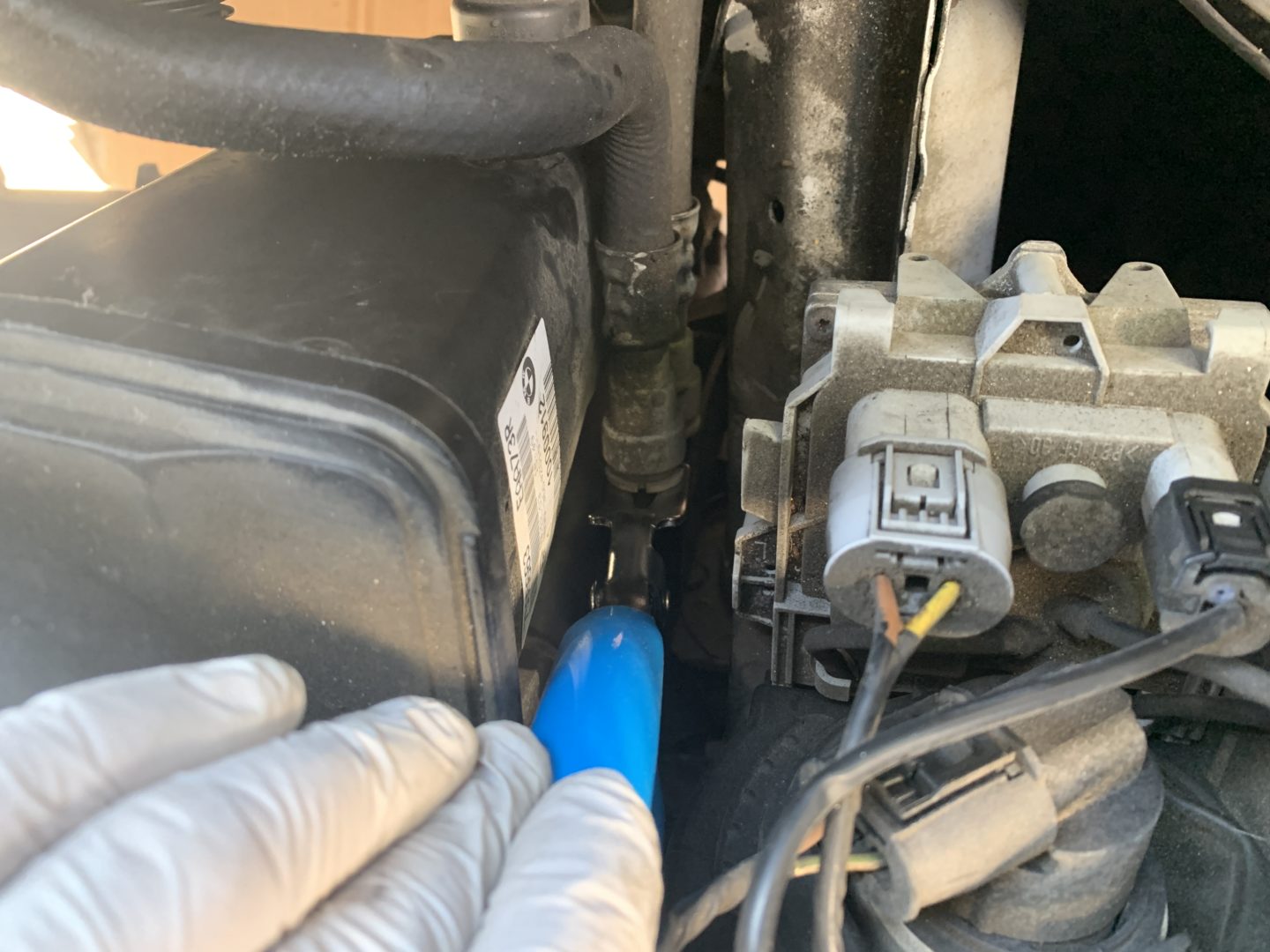
Another way to separate the hose (and one that I found success with) is to use the open end of a combination wrench, and place it behind the hose connection. I then use a long pipe over the wrench to pry it off of the connection. I found the connection to be especially difficult to disconnect, but this method eventually worked. Others have found success using this method as well. You may also want to place some shop towels below it to catch any spills (in addition to the utilizing a drain pan.)
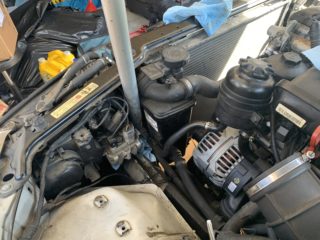
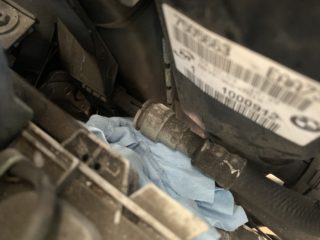
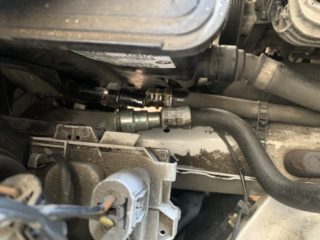
The return hose can then be fully removed and replaced.
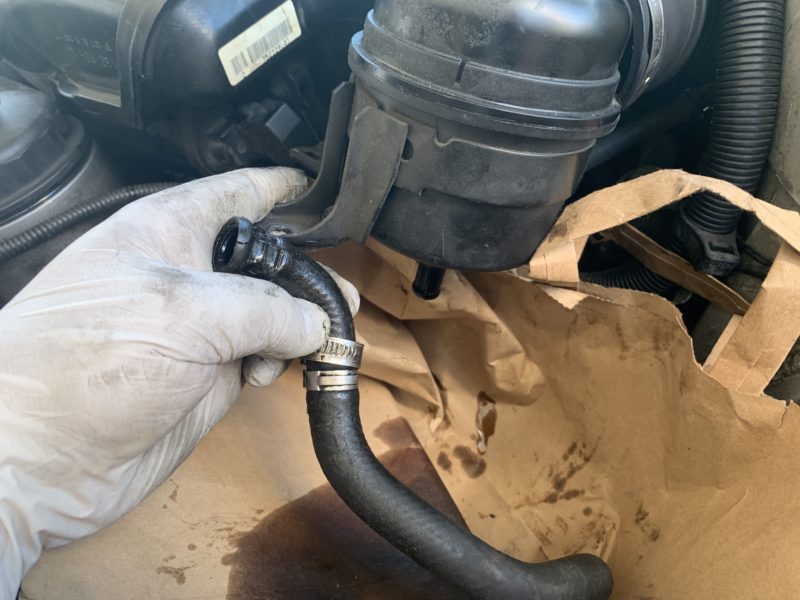
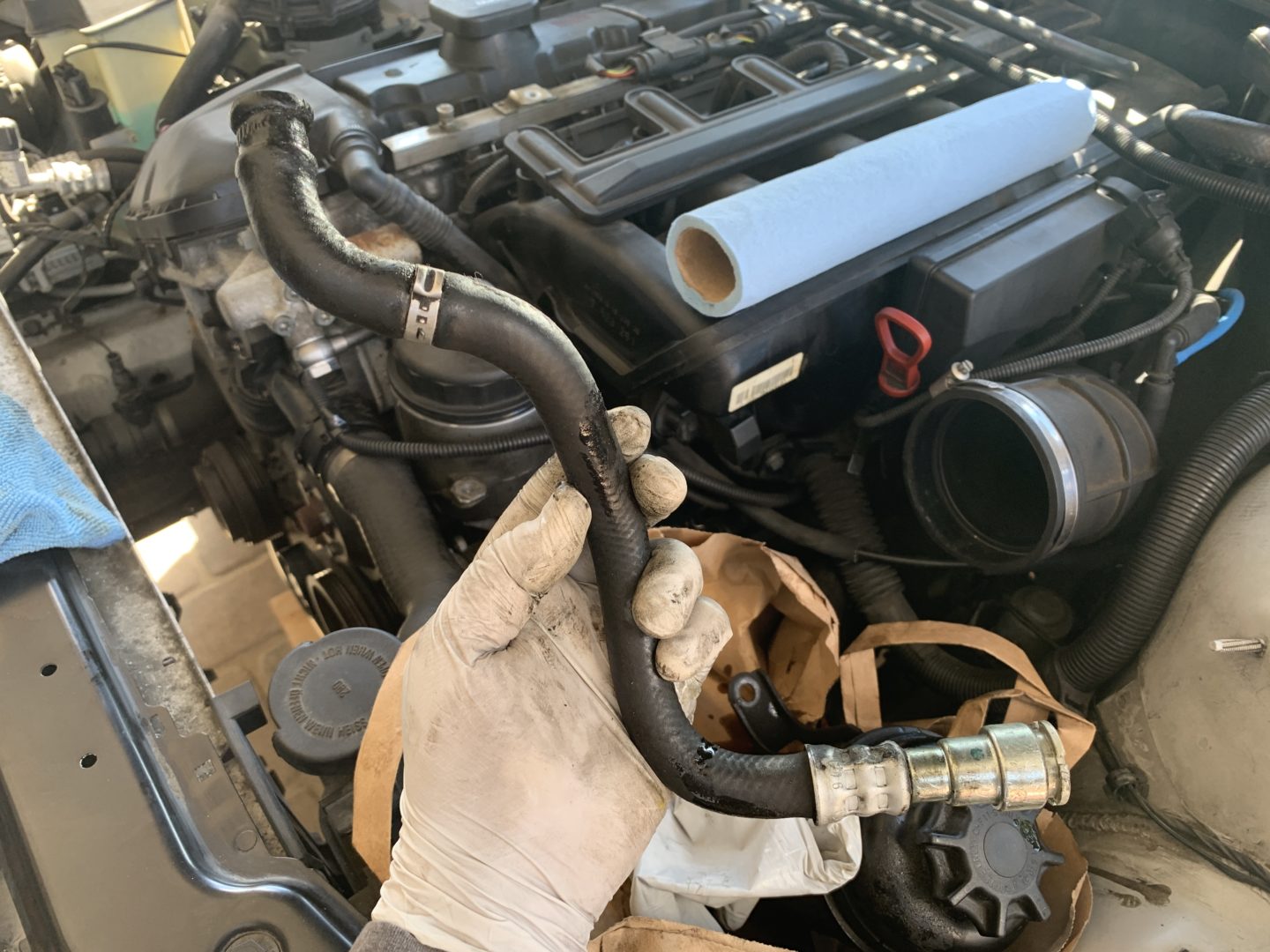
As for the Power Steering Suction Hose (reservoir to power steering pump), it will be a similar process to remove. To gain access to the power steering pump side of the suction hose, you’ll need to get underneath the car and remove the front plastic splash shield. Similar to the Power Steering Return Hose, remove and replace the hose. You may need to get creative to undo the hose clamp at the bottom of the vehicle.
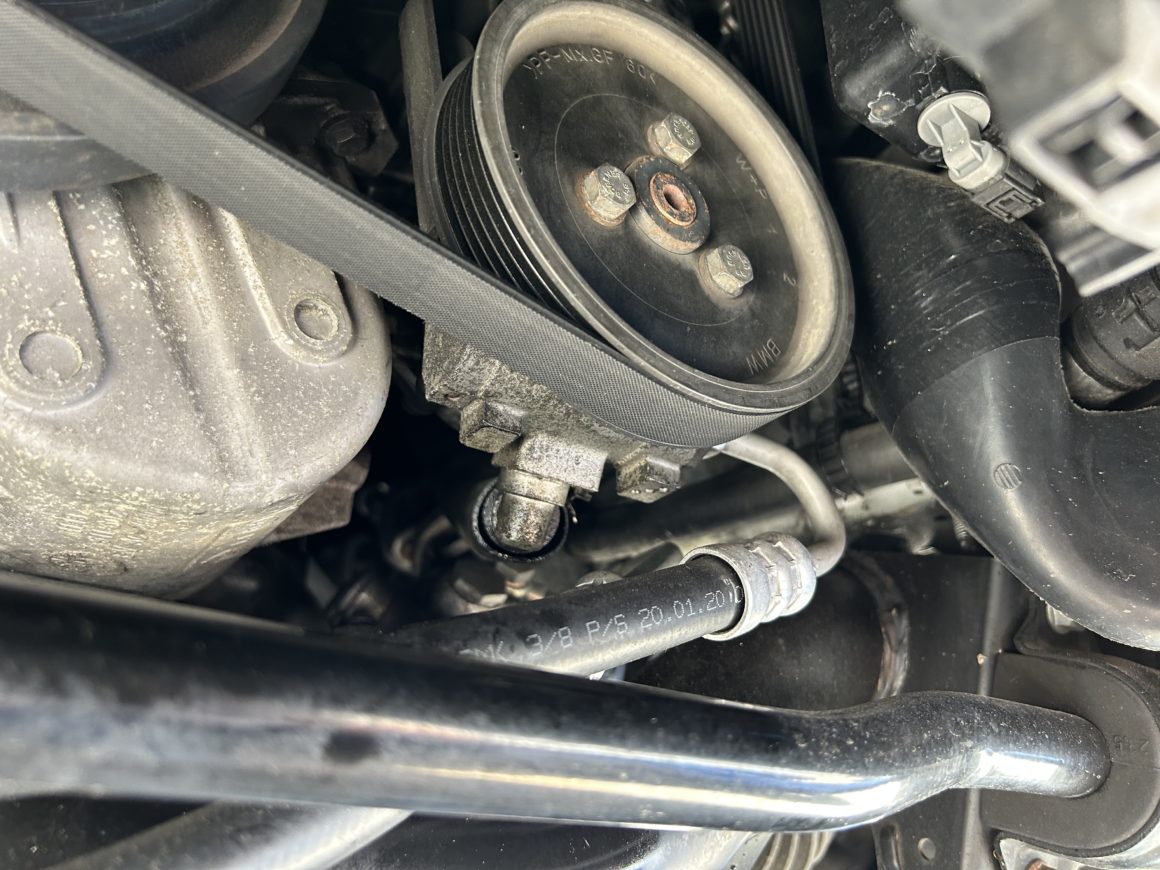
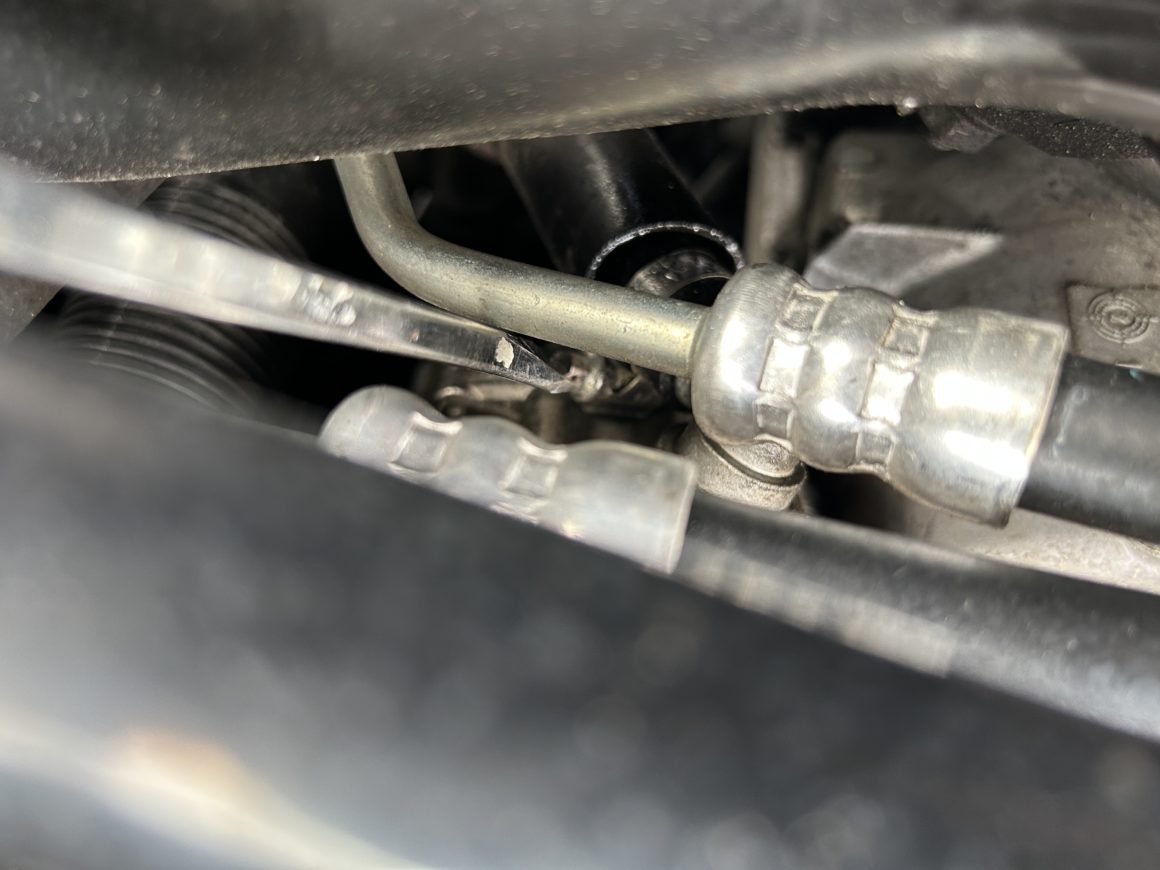
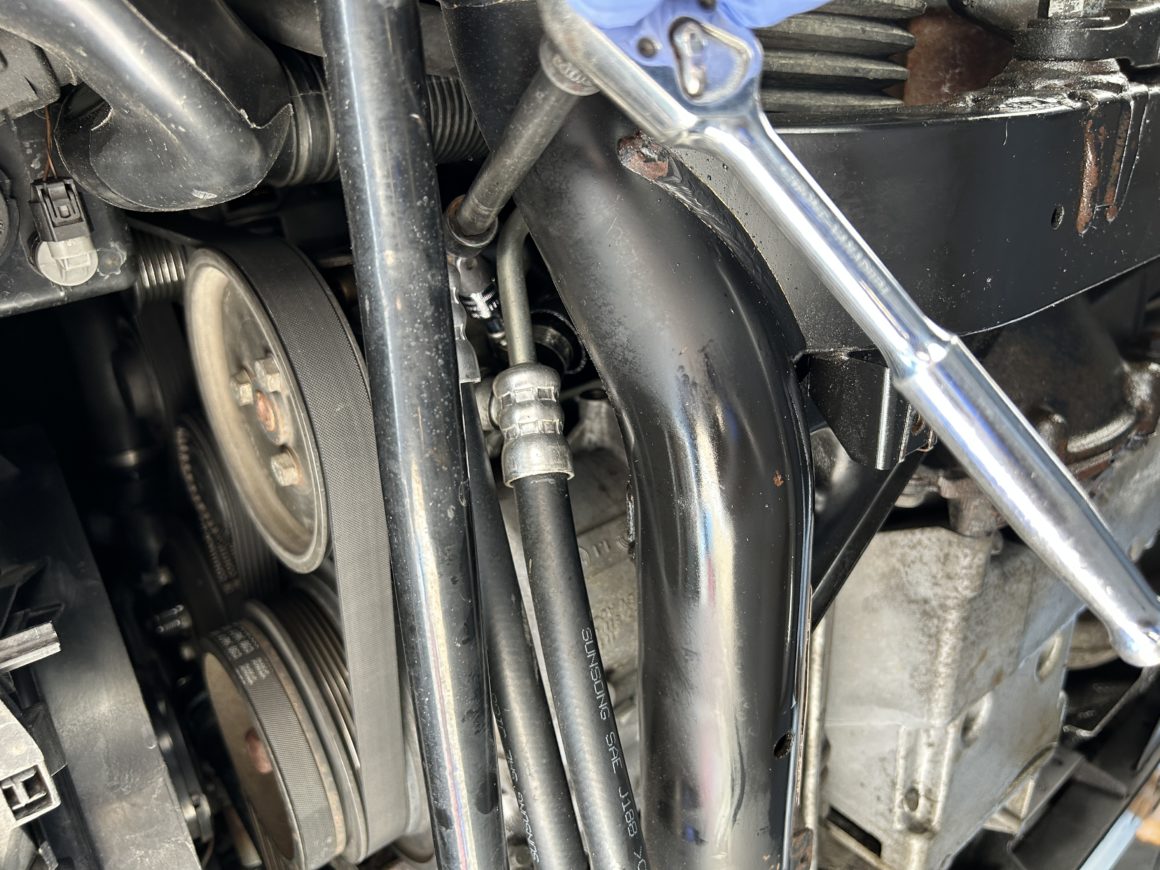
Remove the hose clamps and hoses at the power steering reservoir end.
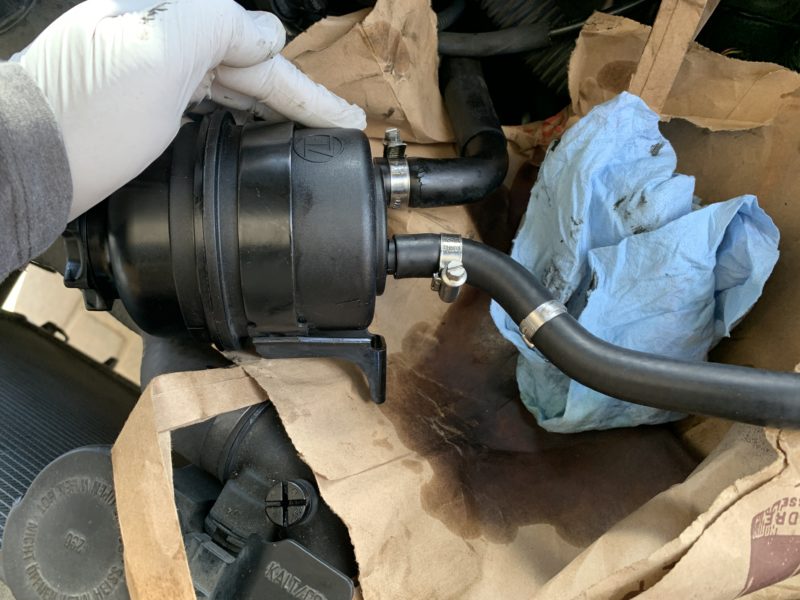
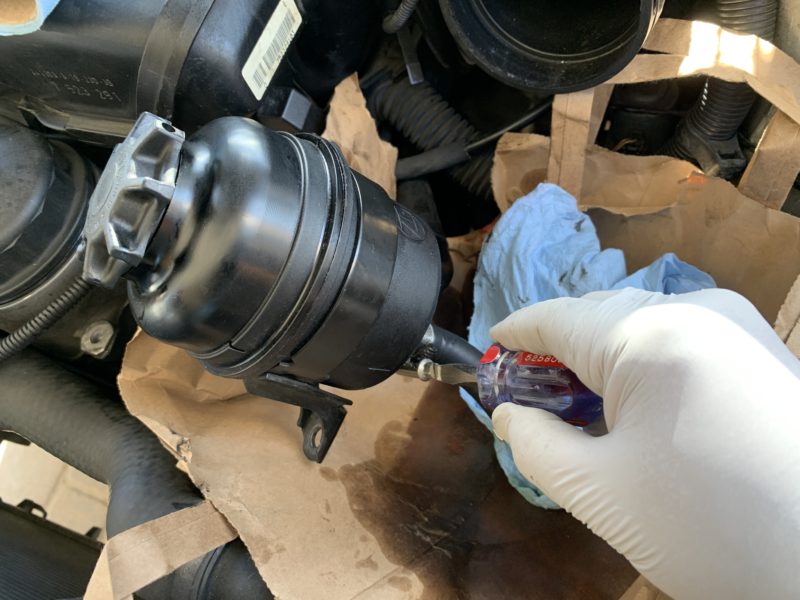
After replacing the hoses, tighten the hose clamps on each end, reinstall the power steering reservoir, mount it to the frame again, and then refill with the correct power steering fluid for your vehicle. After you refill, check the fluid level indicator on the cap to ensure the power steering fluid comes up to the level between the two level indicator lines.
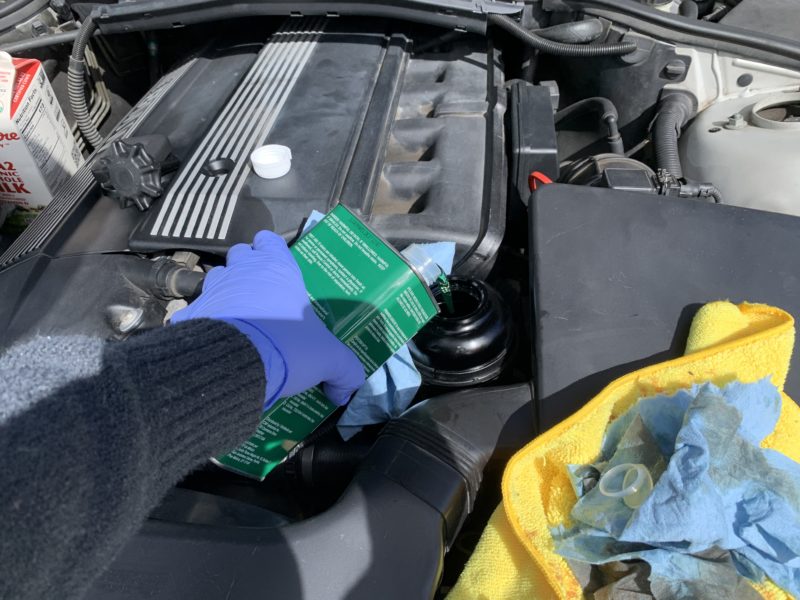
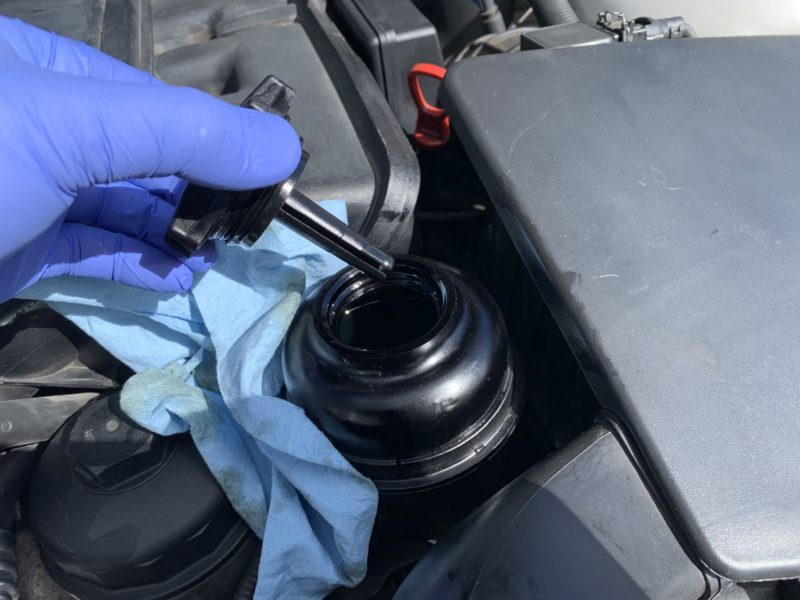
Reinstall everything else in reverse of removal. Take your car out for a test drive and then re-check/re-fill the power steering fluid as needed.

